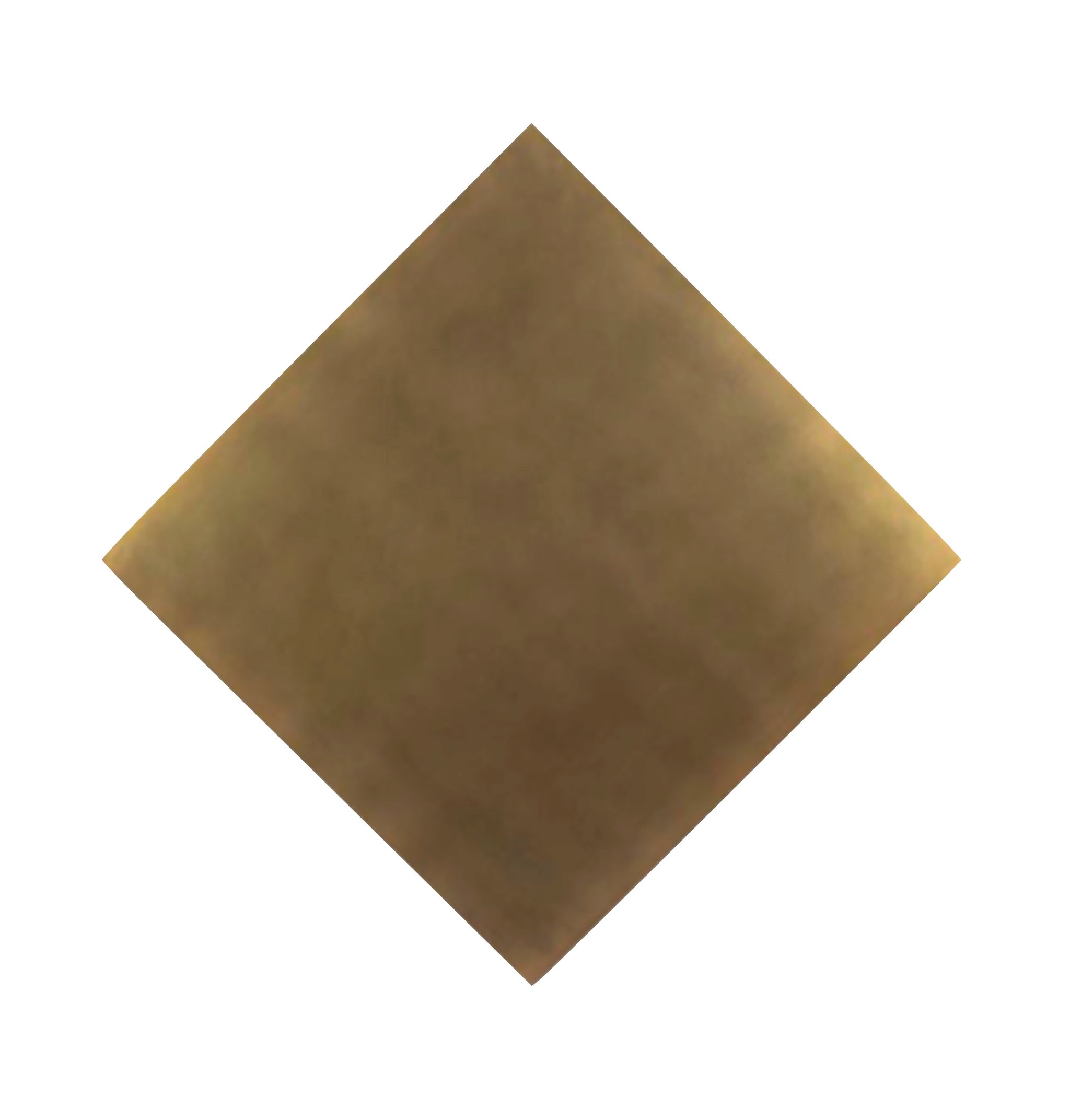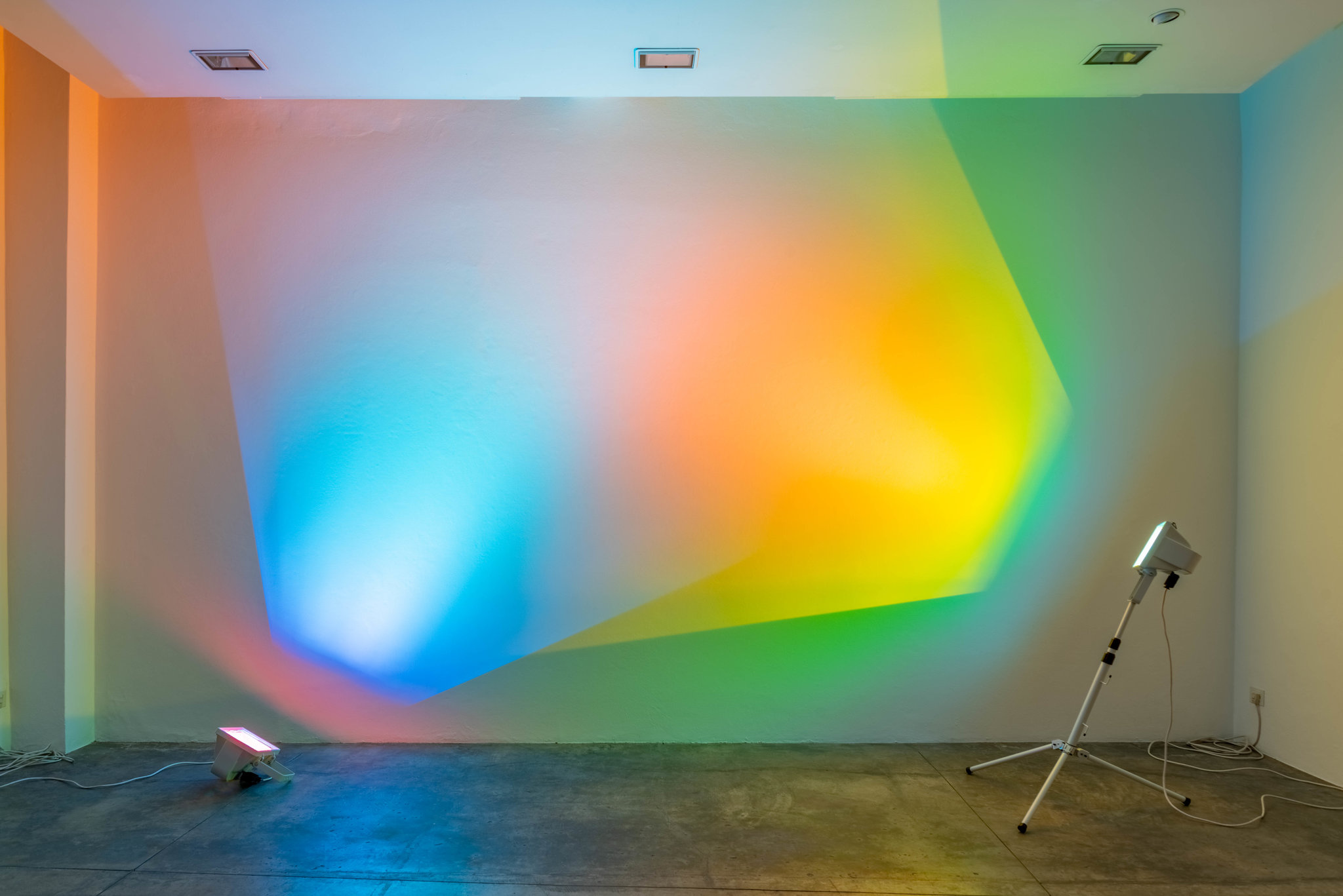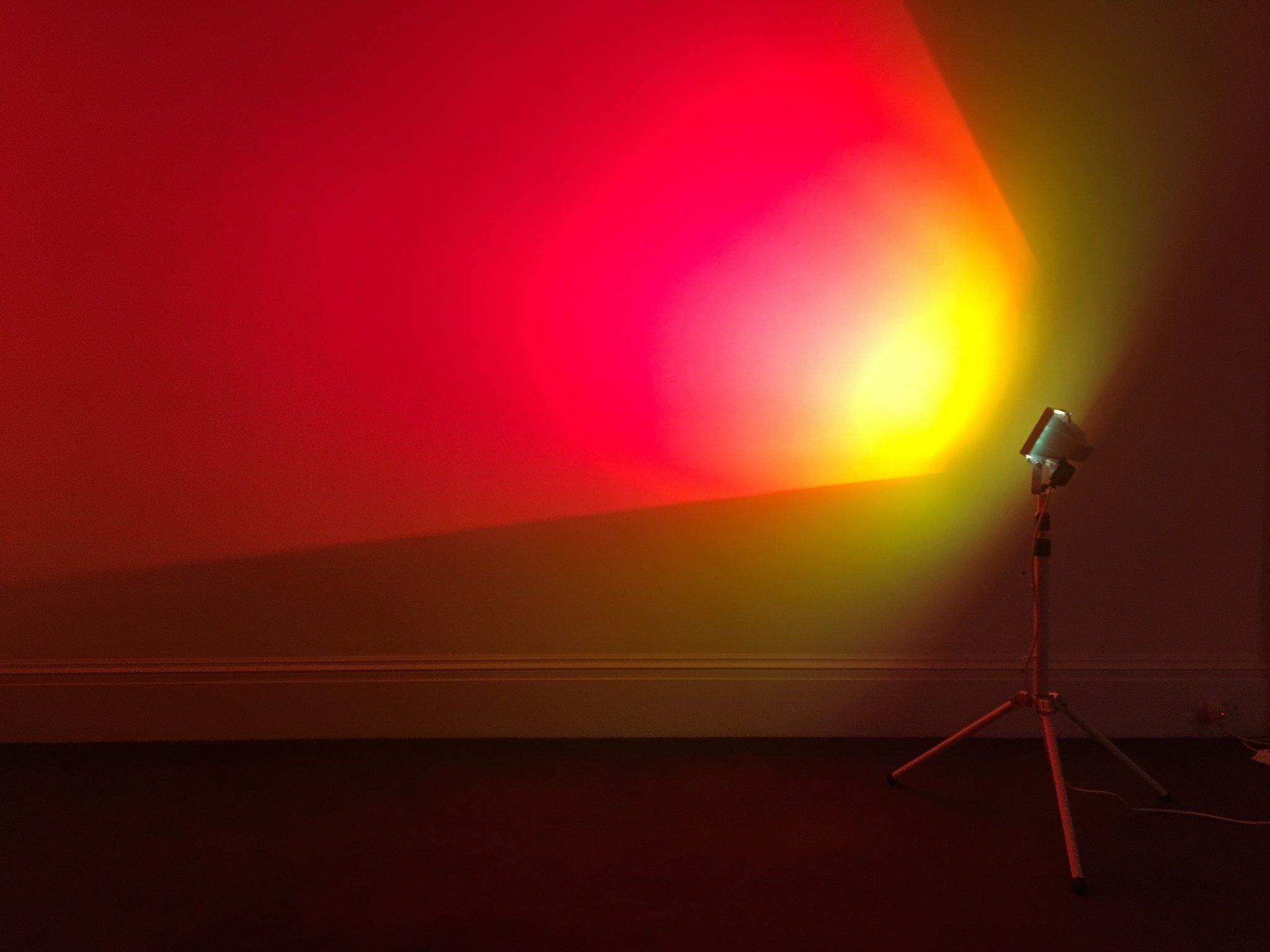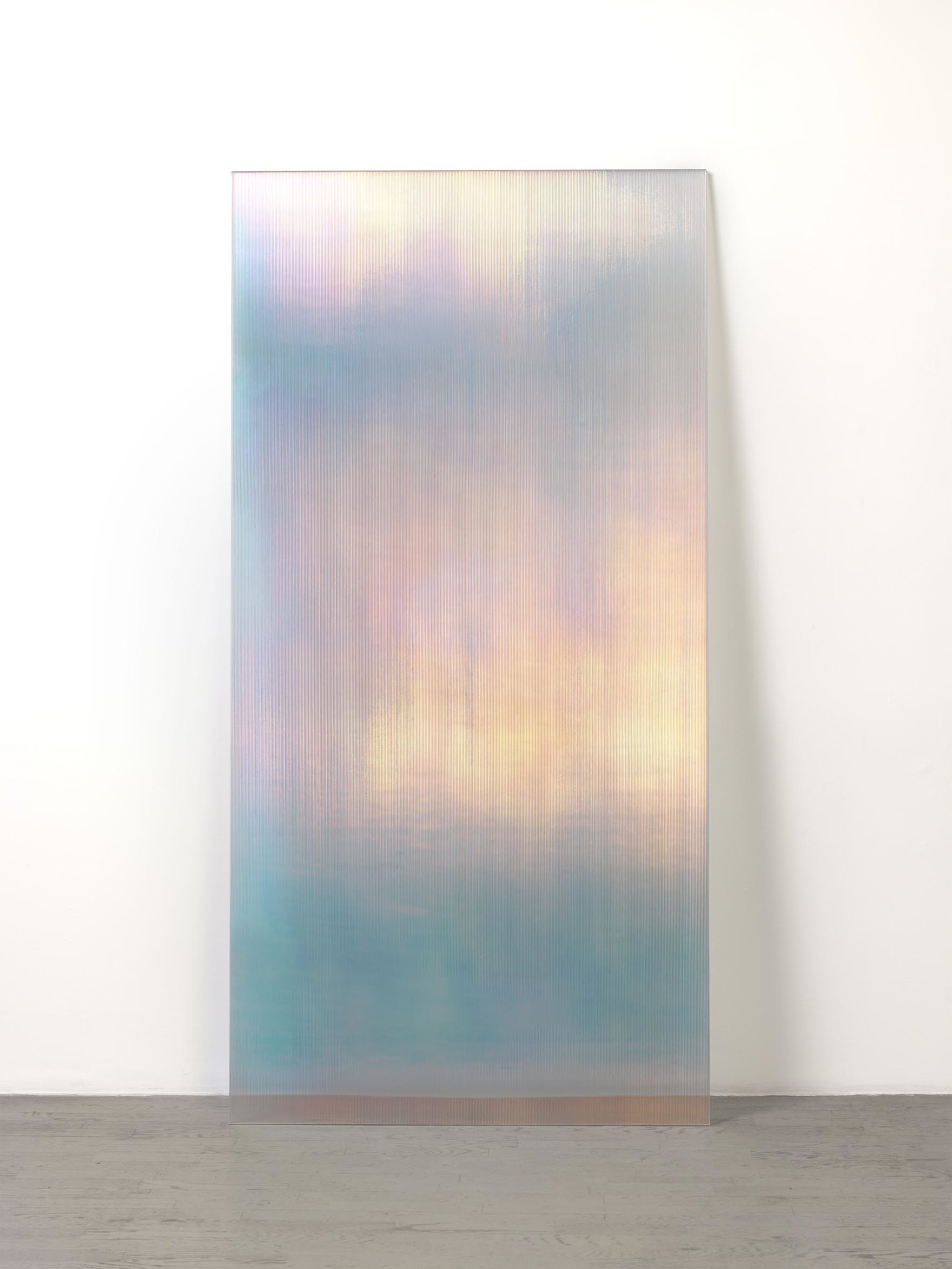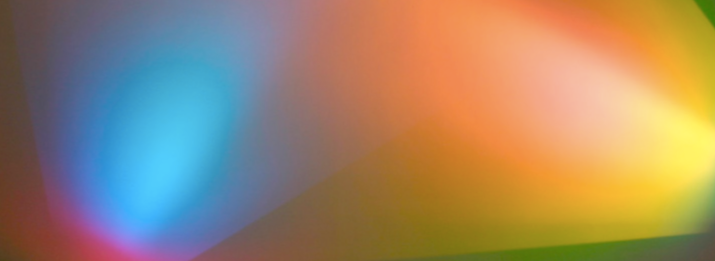
Ann Veronica Janssens
25 January - 22 May 2020curated by Chiara Bertola
Sperimentare l'inafferrabile
Chiara Bertola
The artwork of Ann Veronica Janssens, an English artist residing in Belgium, falls within the aesthetic research carried out by the Californian group "Light & Space", starting from the mid-1960s. We are talking about experiments made by light art pioneers, such as James Turrell, Robert Irwin, DeWain Valentine, Larry Bell, Maria Nordman. Based on the psychology of perception, the researches involved simple and industrial materials such as glass, fluorescent powder (glitter), neon lights, bright gelatine, vapours, and involved an intense relationship with architecture. The space was structured in order to create an immersive environment, aimed at embracing and destabilising the observer.
Ann Veronica Janssens only needs to throw simple sparkling dust on the ground, permeate the space with dense fog, place mirrors on the floor or, again, play with hypnotic bright halos, create changing light-shadow effects, deceptive transparencies, lost sounds, to disintegrate the perceptive certainties of her observers. The artist knows that nothing is unchanging in the perceptual dimension; she knows that in our eyes and through our senses everything transforms, changes and turns upside down to the point of leading the subject to transform into an uncertain, unstable, confused body, just enough to make it perceive its vulnerability. "I use light - states the artist - because it sneaks into the material and the architecture, in order to elicit a perceptual experience, able to set this materiality in motion by dissolving its resistances”.
For Art City 2020 in Bologna, Ann Veronica Janssens, with the typical discretion characterising her work, again uses the mirror trick which is placed - like a foreign eye - on the floor of the Chapel of Prisoners in Palazzo Re Enzo. The artist already presented this experiment in the Sansevero Chapel in Naples in 2014, and previously in Venice, during the 1999 Biennale, when in the twelve mirrors laid on the floor in the Scuola di San Rocco, she “showed” Tintoretto frescoes, as if it was the first time. In Bologna, the alchemy is different, since the painting chemical components and the artwork conceptual components are different. The three circular mirrors overturn the pictorial work of a minimalist artist: David Tremlett, who in 2003 had entirely painted the chapel with the aim of expanding and combining the small environment to an ideal landscape. The mirrors reflect and shatter the work of Tremlett which already aspired to expanding that same space by suggesting to us to imagine it outside, beyond its limits.
The mirrors help Tremlett's work to cross the walls, to expand. And it does so by introducing a new, foreign and innocent eye.
The mirror does not multiply the work, as it did with the fresco in San Severo and San Rocco, but it broadens it, continues it, sets it again in motion through an incredibly vital force. The mirror brings the viewer to take on a new revealing point of view: the mirrors on the floor are like eyes teaching us to look again, with greater freedom. Each mirror is like a plough that turns the clump of dirt around, bringing it back to light, giving it air and freshness. Here is the function of the mirror, the expedient which allows the artist to include in the artwork’s space the external landscape, referred to by Tremlett in its decoration.
At the same time, the mirrors are also "intruding" objects which, when introduced into a pre-existing space, mix up its balance, bringing out new meaning configurations: this is an important idea for Ann Veronica, who considers extraneousness, also and above all, a possibility for transformation to happen. The work she presents only exists when the observer’s gaze comes across it; it fills and feeds on the other: what is foreign puts it in motion giving it even more strength: "I am looking for a solution to move the walls a little further", says Ann Veronica Janssens. The mirrors allow the observer to get out of the chapel's claustrophobia, establishing a relationship between the inside and the outside: an undetermined, fluid, circular relationship, which the two artworks, together strengthened and combined, stage in a potentially infinite game.
In order to define Ann Veronica Janssens’ work, we must recognize the concept of "immateriality" from different points of view and welcome it as a vital and creative centre around which her work arises, each time as print, trail, shadow, light, fog, transparency.
A trajectory that does not trivially lead to the disappearance of the artwork, but rather to affirm a work whose dematerialisation favours the "unveiling of the invisible". In order for this disappearance and reduction to take place, it was necessary for the artist to remove, diminish, pulverize, delete (I am referring to the glitter dust, the transparency of light, the doubling of the mirror, the disorientation of the fog); in other words, to destabilise the perceptual values we are used to and to let other things reveal themselves.
The artist prefers to go through everyday life like a flâneur, allowing herself the opportunity to notice the details and the things she would not see otherwise. She believes in serendipity: the unexpected discoveries, the lesson and the intuition coming from where you would never have dared or imagined, the perception of chaos. In relation to her research, this attitude means the rehabilitation of something unforeseen and uncontrollable, something that leads to outsizing, redrawing relations with the visible, with the light, with the darkness and with the listening; something that is able to redefine perceptual experiences in relation to space and time. Thus, the reflections of light on the tram rails become minimal sculptures, and the process between two liquids such as vinegar and oil in the vinaigrette becomes the liquid and illusory transparency of the "Aquarium" series (2010-17). Ann Veronica Janssens experiences in this way the instability of reality and the impossibility of defining the world around us with certainty and definitively.
Her sculpture can also be understood as a very simple gesture, which changes every time in relation to the space and the bodies which pass through it and live it. The gesture determining the work displayed at Punta della Dogana in Venice was simple and infinite - that handful of luminescent glitter thrown on the ground – just like the installation conceived today for the exhibition at Galleria G7 is simple and powerful. In the small but articulated space of the historical gallery, light, the main material characterizing many of her works, is the only protagonist. Two coloured projections, shapes of light without body, indeterminate and defined at the same time, seem to oscillate, move on the surface of the wall, according to the movement of people in the space.
"In my works - states the artist - light weaves into the matter and the architecture and it destabilizes its resistance which ends up dissolving, leaving room for new visual perceptions [...]. I am interested in what escapes me, not that I want to stop its escape, but, on the contrary, I want to experience the elusive”.
The two beams of coloured light are fiery, so powerful as to radiate and envelop the entire space in colour, which is transfigured and, in fact, reveals itself as the subject itself. Again, the acting element - in this case the light – spreads out as a virus and becomes an intruder, a stranger, and capable of altering and tampering all perceptual values. These are ephemeral sculptures whose action is precisely to disperse in order to "infiltrate a space rather than impose its presence on it”.
Spatialisation and dispersion of light, colour radiation, strobe impulses, artificial mists, reflective or diaphanous surfaces are all means that the artist uses to reveal the instability of our space and time perception. She chooses materials with precise properties - brightness, transparency, fluidity, refraction - and relies on precise physical phenomena, such as transmission, reflection, refraction, balance - which are questioned until the very notion of materiality falters.
It is also true, however, that her artwork manages, at the same time, to offer us a new perception of the materiality of things and space. She is able to get us closer to the halo of the objects, to the fringes of their consistency, to finally give us a personal and intimate experience.
In this discretion of being and appearing of the work, there is an ethical aspect, or what Janssens in an interview calls "ecological aspect". This relates to the action of taking away that reaches the essence, that experience of the little, that traveling lightweight through a work that manages to appear and disappear in a moment, but leaving its mark. It is perhaps also a strategy that takes us away from today's dazzling seductions of reality, in support of an aesthetic idea that dazzles in a different way: deprived of a "reflected look", Janssens' work, instead, reflects something deeper.
By crossing the imperceptible and immaterial terrain of her works, shadows and reflections become the main characters and the undetected finally begins to exist. In places produced by the immaterial dimension, it is possible to perceive and resound silence: it is the echo of an elsewhere, where to find the refuge sought by each one of us.
The gallery is now a space flooded with seemingly limitless light. The time perception is transformed, there is a suspension. All the geometries have been weakened and have almost disappeared. As the artist suggests, "the light illuminates the nothing which could authorize our wandering [...] we experience a sort of amnesia" and, finally, "we turn to your inner space, opening up to new perspectives".
